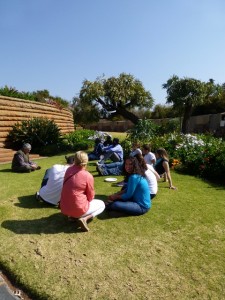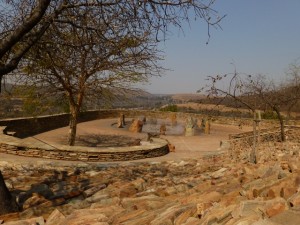 We visited our U.S. embassy to speak with two foreign service officers, both in public relations. They serve as a resource to citizens abroad and do tours in different countries, but also interact with locals and influence foreign policy if they disagree with something. The position interested me for a moment, but I think I’ll stick to the non-governmental side of things. I’m skeptical about how much exposure they actually get while living here and the female representative admitted that they could become trapped in a U.S. embassy bubble, but she tried to avoid that.
We visited our U.S. embassy to speak with two foreign service officers, both in public relations. They serve as a resource to citizens abroad and do tours in different countries, but also interact with locals and influence foreign policy if they disagree with something. The position interested me for a moment, but I think I’ll stick to the non-governmental side of things. I’m skeptical about how much exposure they actually get while living here and the female representative admitted that they could become trapped in a U.S. embassy bubble, but she tried to avoid that.
The embassy was located in a wealthy part of South Africa called Pretoria, which is the reverse to much of what we had been seeing. We visited a few other monuments in this city: Freedom Park and the Voortrekker Monument.
These two were ironic partner sites connected by “reconciliation road”. Freedom park is dedicated to all those that have fought for freedom and the Voortrekker Monument was raised for the Afrikaaners (architects of the apartheid). The Voortrekker museum shared their history and side of the story and the guide drew attention to the fact that in any museum the people that it represents are depicted in a favorable light. I wondered if there was backlash from the citizens here concerning this museum, but I think if this country is going to move toward accepting allof its people than this monument has a place here—after all, history cannot be changed and the Afrikaaners are a part of South African history, good or bad.
Freedom Park was a very serene place—thus far, my favorite place. They are in the process of building the five parts to the monument, but the parts that we got to see were incredibly moving. You make your way through a wall of names (S’khumbuto) of those that have died in the eight conflicts that have taken place during South African history (Pre-Colonial Wars, Slavery, Genocide, Wars of Resistance, the South African War, the First World War, the Second World War and the Struggle for Liberation.) and then through a large natural amphitheater. There was a sanctuary and eternal flame which invites people to remember those who have fought for freedom and in the hall of leaders some are memorialized for their significant contributions.
The last part and most symbolic is called Isivivane and is a resting place for those who died in their struggle for freedom. When you enter the stone cul-de-sac you remove your shoes as a sign of respect and in front of you stands eleven boulders that represent each of the nine provinces of South Africa, the national government and the international community. In the center of these a mist rises to represent purity.
We had lunch in the park and I wandered around a little on one of the many trails (the park is enormous). It was peaceful, humbling, and the views are really breathtaking.


Leave a Reply